
13 minute read
RT Vintage Market
from Show Daily


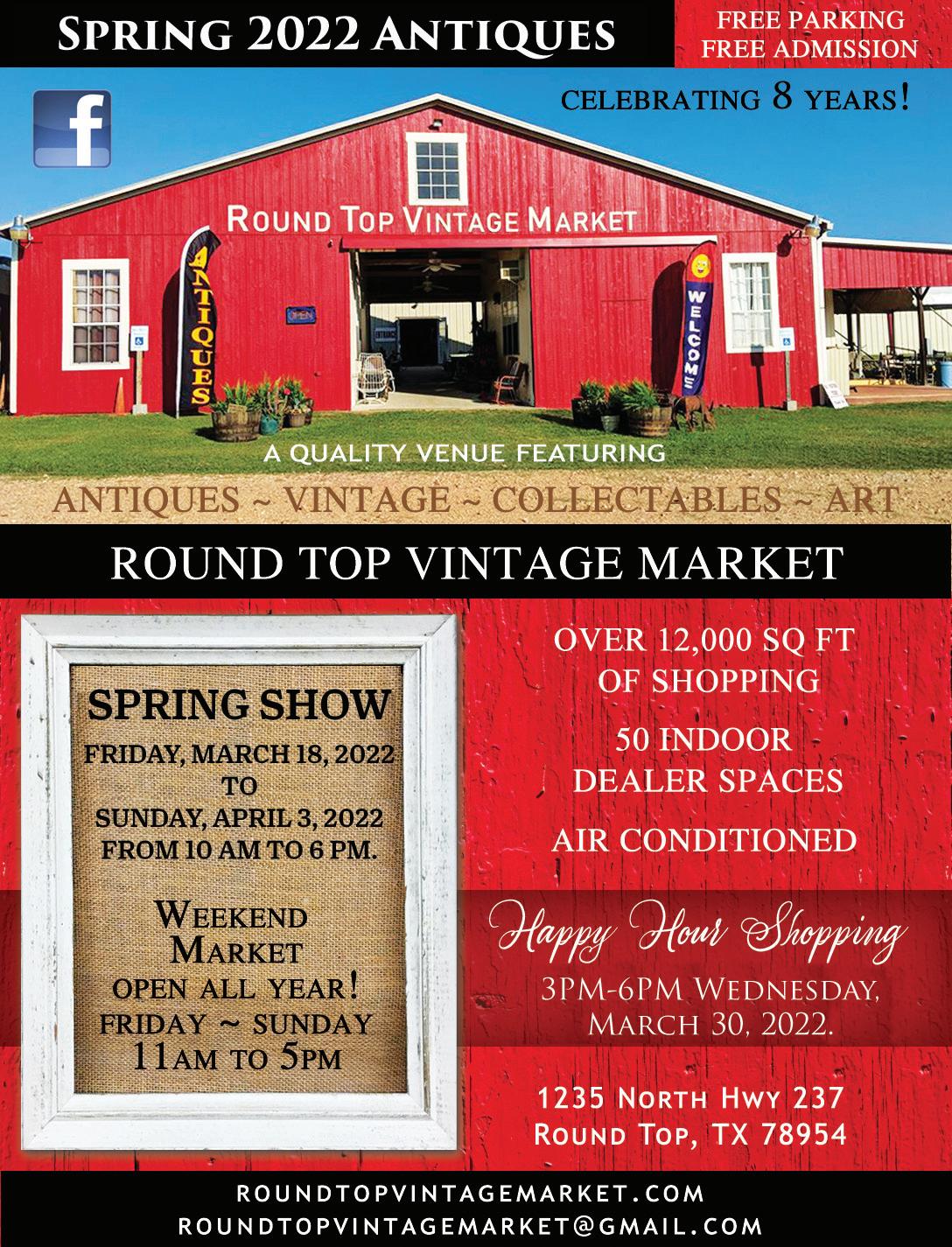

Antique and vintage sales have soared, thanks to supply chain issues.
Jura Koncius
January 26, 2022 The Washington Post’s Helen Carefoot contributed to this report.



When Samantha Manocchio moved to Washington from California last year, she brought her clothing and not much more. The 23-yearold rented a studio apartment and set out on a search for furnishings, including a table to anchor her small space. “I am very focused on sustainable living,” says Manocchio, who buys mostly secondhand or sustainably sourced clothing. “My generation is conscious about how we as individual consumers can do our parts.” Some change their diet, she says. Others, like her, look for pre-owned furniture instead of cheaply made “fast furniture.” She shopped local, buying a 100-year-old English Pembroke table from Georgetown’s Pillar & Post, a few miles from her home. The mahogany table on brass casters, which she plans to keep forever, was delivered a few days later in the back of an SUV. Manocchio is part of a wave of consumers who, in the past two years, have been buying mid-century modern burlwood buff ets, 1970s velvet sofas and French farm tables. The pandemic has created a bit of a perfect storm for the used and antique furniture business. All this time at home has made people yearn for a fresh look. The spike in home remodeling and all the moving around people have done created new spaces to fill. Frustrated consumers still waiting for a headboard and bedside tables they ordered six months ago are increasingly willing to buy previously owned sofas, just as they are willing to scoop up used Hondas and Chanel bags. Popular online sources for antique, vintage and more recent pre-owned furniture report strong sales. Anything bought secondhand and made in the past 30 years is considered pre-owned; items made between 30 and 100 years ago are vintage; and anything more than 100 years old is an antique, according to Anna Brockway, co-founder and president of Chairish. Chairish’s business in 2021 was up 42 percent compared with 2020. In 2021, Kaiyo had five times the revenue it had in 2019. Searches for vintage or antique couches on Etsy increased by 126 percent in 2021 compared with 2019. Reusing old furniture is a natural choice to reduce waste for sustainability-minded consumers. According to Environmental Protection Agency statistics, 12.1 million tons of furniture and furnishings waste was generated in 2018, up from 2.2 million tons in 1960. The EPA also reports that 80.1 percent of what was discarded ended up in landfills or disposal centers. “As people increasingly shop with their values, buying vintage furniture enables sustainability-minded shoppers to reduce their carbon footprint, all while supporting small, independent businesses,” says Dayna Isom Johnson, Etsy’s trend expert. Younger customers in particular are discovering that old items add character to a room. “Antiques have been around for a long time and have a proven durability and a classic style,” says Daphna Peled, owner of Pillar & Post. She says her millennial and Gen Z customers, such as Manocchio, realize these pieces aren’t just a fad. “Buying a
piece with history that is also a greener alternative is an added bonus,” Peled adds. Chairish, a curated online marketplace for upscale vintage home furnishings that started in 2013, has found that the saving-the-planet aspect of pre-owned pieces is an important driving force in the market. “It’s gone from being a style thing to also being an environmental advantage,” Brockway says. Of Chairish’s total inventory (around 850,000 items), 95 percent comes from dealers, collectors and galleries. “Things are shipped point to point and not from one huge warehouse, which is frankly more environmentally conscious,” Brockway says. Alpay Koralturk, chief executive of Kaiyo, founded the online marketplace for pre-owned furniture in 2014 after he realized how often he was moving, as well as buying and selling furniture. He wanted to make it easier for consumers to get rid of and acquire pre-owned pieces and was intent on making sustainability a core value. Kaiyo works similarly to an online consignment business. It will pick up approved pieces from sellers and photograph and post them on its website. (Current locations served are the New York metro area, Philadelphia and nearby suburbs and Washington, as well as parts of Virginia and Maryland.) Sellers can get an instant off er from the company or wait to see what their pieces sell for and get a percentage of the amount. Buyers can pick items up at a warehouse or pay a fee to have them delivered. As with vintage clothing, brands matter. The five currently best-selling Kaiyo brands are CB2, West Elm, Herman Miller, Article and Design Within Reach, Koralturk says. “We are also seeing a grandmillennial trend,” he says. Heritage brands such as Ethan Allen and Drexel Heritage are having a moment. And floral sofas are back, like it or not. At the Gallery at 200 Lex, a 33,000-square-foot vintage and antiques emporium at the New York Design Center, gallery director Emily Collins says business has been brisk, especially from designers desperate to furnish clients’ empty homes. Collins says the 52 dealers who maintain booths their stock “pieces that are ready to rock and roll,” including leather inlaid desks and MCM Vladimir Kagan curved sofas. The dealers also post items on incollect.com, an online antiques and vintage marketplace, and buyers can then arrange through the gallery to have pieces shipped anywhere. “Everyone wants something right now, something really special,” Collins says. “You can walk in and say, ‘I want that pair of Italian club chairs. How quickly can you get them to me?’ With local shippers, we can get them out in a few days. If they can get a big enough UberXL, we are happy to help them load.” Designers such as Jay Jeff ers in San Francisco are scrambling for available furniture. “Two adults are working on one side of the house, and the kids are in school on the other,” he says. They need more space and more furniture - and they need it fast. “But everybody is backed up,” Jeffers says. “One manufacturer just told us that last month’s 16-week lead time for a sectional sofa is now 36 weeks.” So Jeff ers is sourcing more vintage upholstery that he can have recovered, but even that is taking 14 weeks. Sofas are big sellers at many vintage shops, including Baltimore’s Wishbone Reserve, a go-to location in the hip Hampden neighborhood where shoppers, including decorators and set designers, appreciate the mix of art deco, Victorian and MCM. Filmmaker John Waters sometimes stops by. “Used upholstery, who would have thought,” says co-owner Julie Lilienfeld, who says customers tell her they don’t want to wait months “to get their upholstered pieces from Crate & Barrel.” She adds: “We get stuff in and it sells instantly.” Antiquing once required having a car with a trunk, but social media has made it possible for others to easily join the hunt. Instagram had already expanded the market for those looking remotely for

antique and vintage pieces when the pandemic hit and many antique centers and flea markets had to close. The shift brought consumers just a few direct messages away from scoring the teak bar cart or 1980s swivel pouf of their dreams. Wishbone Reserve recently sold a sofa and two chairs by hot postmodern Italian architect Tobia Scarpa for $10,000 on Instagram. (Scarpa’s work is also owned by Hollywood designer Kelly Wearstler.) The customer paid to have them shipped to Los Angeles. “We had none of this national business before the pandemic,” Lilienfeld says. Other frequently requested items are patio furniture, Dansk enamel cookware and anything bar-related: carts, teak ice buckets, nice glassware. “I think that a lot of people are at home drinking these days,” she says When stores shuttered in spring 2020, Mari Ann Maher, co-owner and shopkeeper of the Antique and Artisan Gallery in Stamford, Conn., quickly pivoted. She posted items twice a day on Instagram and added a virtual showroom feature to the website. “The first thing I thought when we were told by the state that we had to close was that I have to reinvent myself,” Maher says, as she worried about how her 22,000-square-foot gallery could survive without shoppers. But to her surprise, sales from social media soon outpaced sales from the website. New Yorkers who fled to Connecticut for more space turned to Maher to furnish their pandemic-era outposts, thus avoiding long delivery times at furniture retailers. Items to furnish home off ice setups, lighting, upholstery and even textiles, she says, are still flying off the virtual shelves. There are new players on Instagram, too. Holly Rockbrune and Jenna Parkes, childhood friends who grew up together in Ontario, started selling curated “drops,” or collections, of French heirlooms and antiques in 2019 on the platform. The feed for Joliette, which has more than 56,000 followers, is a grid of aspirational vignettes plucked right out of a chic Parisian apartment, featuring bentwood bistro chairs, tableaus of pottery and brass candlesticks on rustic tables. They want customers to envision the items in “snapshots” and to be able to re-create something similar, even if they’re not anywhere near a French or Canadian “brocante,” or flea market. Mirrors are always in demand on the site (they range from $250 to $2,500), especially gilded, “iconically French” 19th-century Louis Philippe statement ones. “There’s almost a global style now,” Parkes says. “It’s like the world has opened up in terms of design inspiration.”

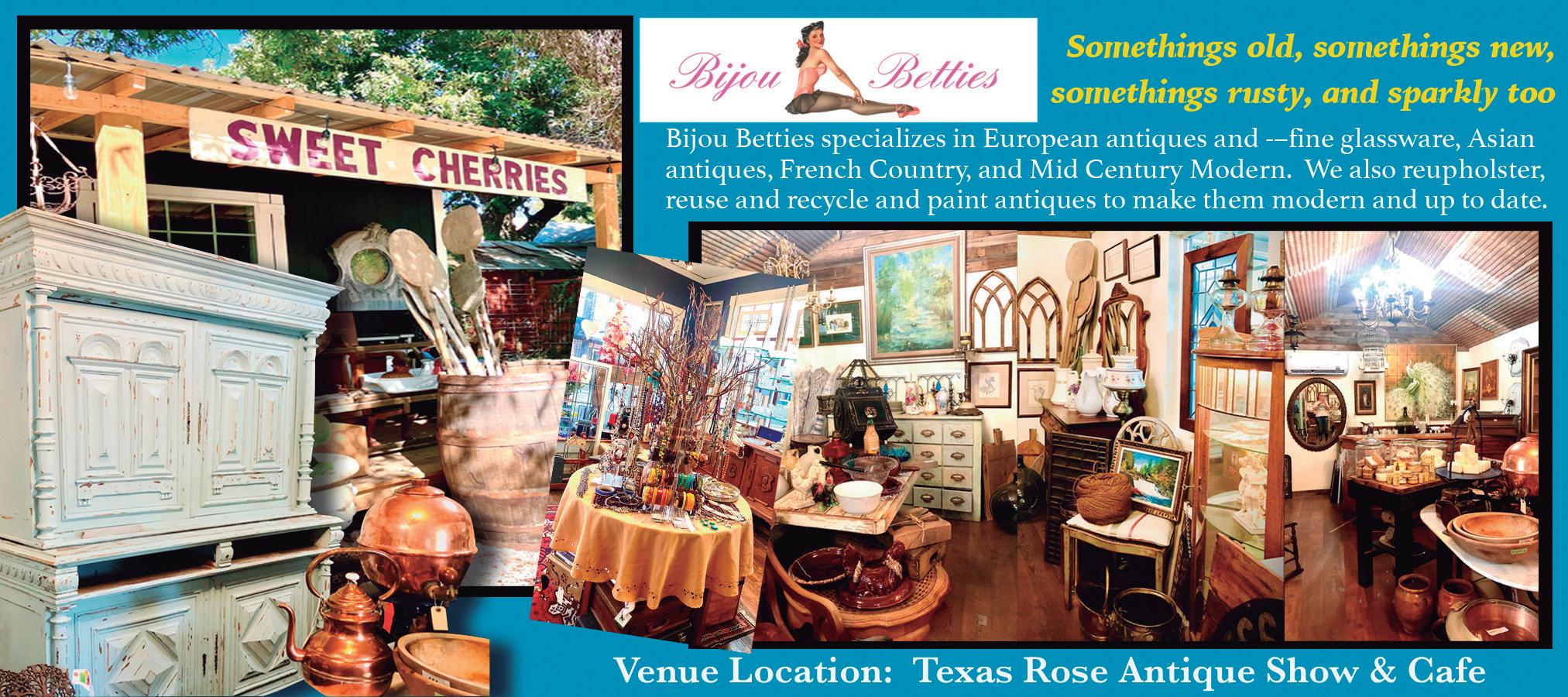
A Cup of Coffee and
Parlay the dream By Lou Christine
Many of us have imagined existing in what might be considered an idyllic lifestyle. Image, escaping from a dog-eat-dog world, off the treadmill, sword-fi ghting in the corporate world or stuck perhaps in some dead-end job that’s monotonous seemingly without merit other than the coin.
There’s keeping up with the mortgages, car payments, the kids’ education, vacations, club fees etc. etc. etc. But further imagine discovering an easy-going, quaint, and picturesque town, an upscale Mayberry, with a sense of community, surrounded by pristine pasturelands where everybody is friendly and knows each other’s names.
Then imagine, as perhaps you already have, that you and your significant-other being the proprietors of a nice and cozy coff ee shop, a throw back in time, nothing complicated but just serving great brew and a couple of other simple to make items. The plus side might be to get to know the townspeople while contributing to the fellowship of the newfound community. Well, it happened or I should say Carolyn and John McNellie made it happen. Married now for 48 years, the McNelllies eased into town eight years ago and have operated the popular Round Top Coff ee Shop, in Round Top. Let’s rewind just a bit. Carolyn, was involved in the corporate world, in high finance, up in Big Dallas. Our John was a musician, a keyboard man, singer, becoming very much involved with his church’s musical arrangements, while also showcasing his artistic side arranging and manipulating colorful and thought-provoking mosaics out of broken glass. Carolyn says as soon as they drove up to Round Top’s town square, she knew it was the place. The Plan: They’d open their coff ee shop without fanfare and once the coff ee got roasting John could retreat to his “Broken Pieces” art studio. The W Wantke stop is the second location. At first, they were set up in a garage just around the corner. According to Carolyn it has all worked out, enough (she laughs) for her to fire our John which she says with tongue firmly in cheek. They can handle the hours, eight till noon, closed Mondays. Carolyn and her small staff serve their java from Texas Coff ee Traders out of Austin. In addition, an assortment of muff ins, croissants, cookies etc. are readily available along with their famous and tasty “breakfast tacos.”
Asked about branching out Carolyn said they have in the past set up at Blue Hills and Big Red Barn, a show here and there, but they’re not looking for more work and obtaining good help during the shows can be challenging and they’re more concerned about servicing the clients they have. The friendly shop is open all year round and there are enough coff ee drinkers in and around Round Top who keep the McNellies busy. So if looking for a robust cup of coff ee and perhaps some good conversation The Round top Coff ee Shop is likely for you.
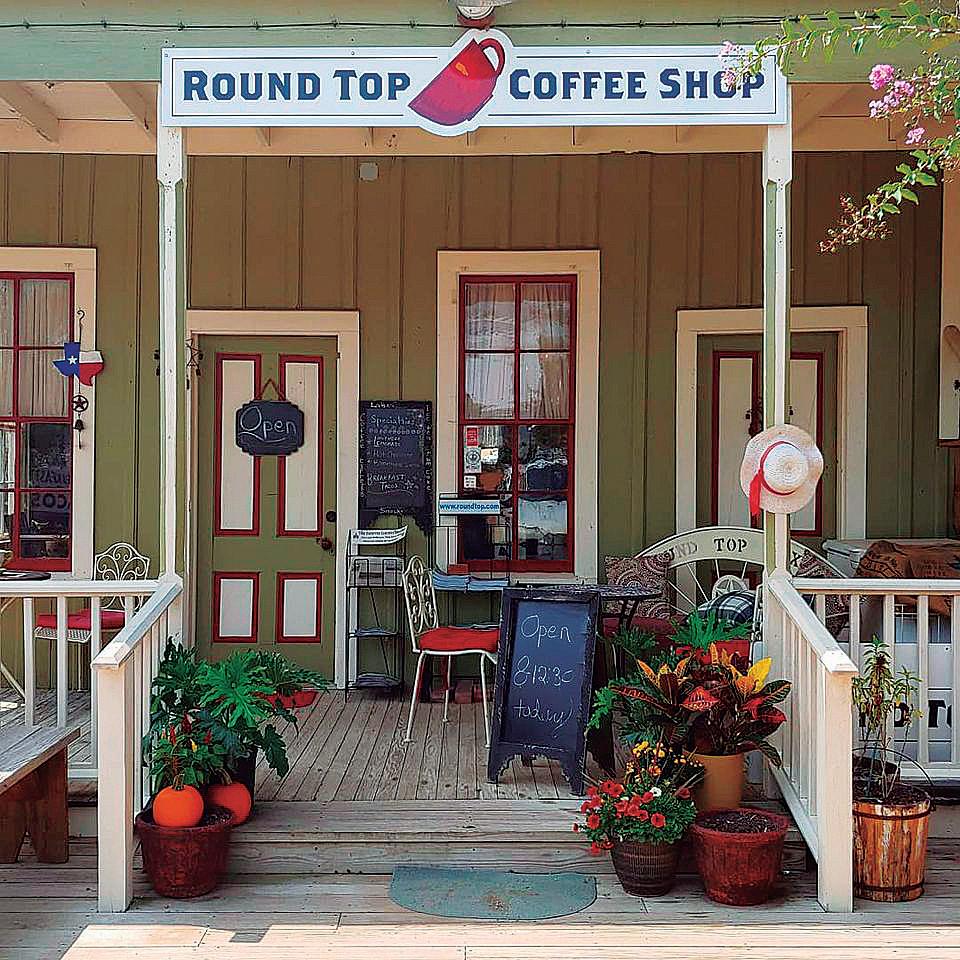
ADAMS @ The Venue


BOGA RUGS

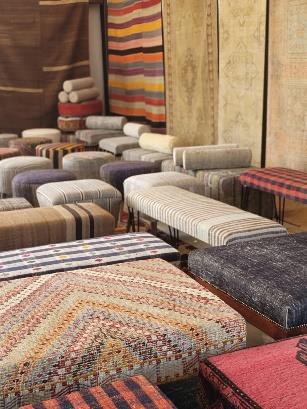
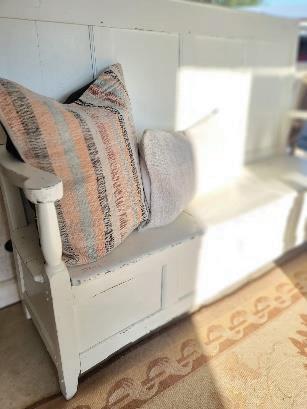


OPEN DAILY March 18-April 4
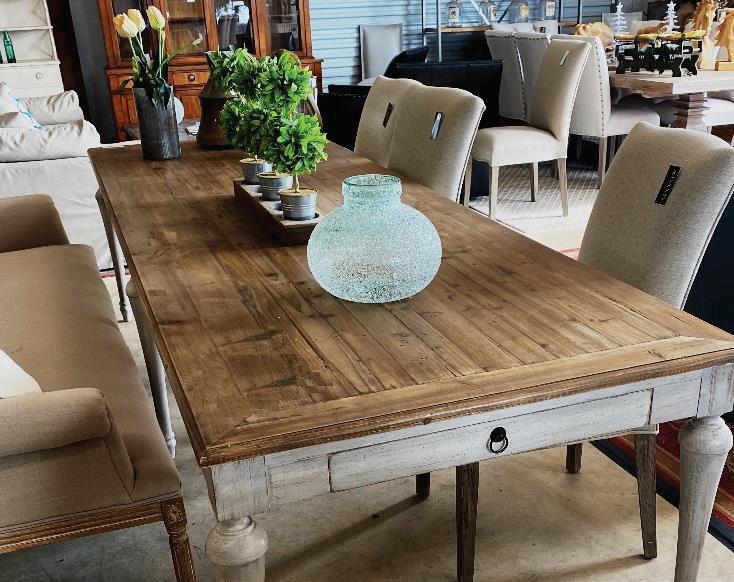
(336) 259 2060 adamsfurniture.com
CAROLINA VINTAGE HOME

ADAMS FURNITURE USA INC.
Michael Stewart
Adams is a wholesaler and retailer of antique reproduction furniture and accessories; the majority of our customers are interior designers and discerning retail customers.
Our warehouse and manufacturing facility is based in Thomasville, North Carolina, close to High Point (the “Furniture Capital of the World”)
In the early 1970s the owner of Adams Furniture (Steve Copsey) began buying antiques at the major auction houses in London, England. At one of the fi rst auctions, he was the successful bidder and the auctioneer banged his gavel and said “sold to Mr. Adams”. Because the name Adams is synonymous with fi ne furniture (Robert Adam 17281792) and it came near the top of any alphabetical listing, he adopted Adams as his trading name. Furniture, like fashion, is very open to any design being copied and sold at a cheaper price. With furniture, this was particularly prevalent when manufacturing was being moved from the United States to China; we seized the opportunity to bring all of our manufacturing stateside.
With our extensive experience in seeing patterns, changes in trends in the US market and the evolution of the interior design market, we are in a unique position to preempt the movement in the market and adapt accordingly. Because we design and manufacture our own range, we can easily follow any changes in style trends and encompass “hot looks” into our line, along with offering customization to our clietns. We pride ourselves on being a small family business and this also gives us the ability to “cut the cloth” to suit any economic circumstance.










